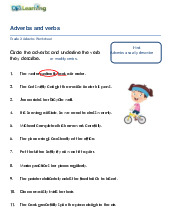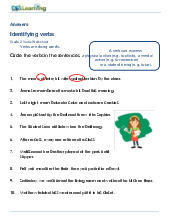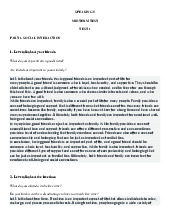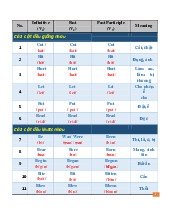





Preview text:
lOMoAR cPSD| 47270246
SOIL CONSERVATION AND SUSTAINABLE AGRICULTURE
Ancient farmers recognized that crop yields on a particular plot of land decreased over the
years. Moving to uncultivated areas, they observed the same pattern of reduced yields over
time. Eventually, they realized that fertilization, the addition of mineral nutrients to the soil,
could make soil a renewable resource that enabled crops to be cultivated season after season
at a fixed location. This sedentary agriculture facilitated a new way of life. Humans began
to build permanent dwellings—the first villages. They also stored food for use between
harvests, and food surpluses enabled some people to specialize in nonfarming occupations.
In short, soil management, by fertilization and other practices, helped prepare the way for modern societies.
Unfortunately, soil mismanagement has been a recurrent problem throughout human
history, as exemplified by the American Dust Bowl, an ecological and human disaster that
ravaged the southwestern Great Plains of the United States in the 1930s. This region
suffered through devastating dust storms that resulted from a prolonged drought and
decades of inappropriate farming techniques. Before the arrival of farmers, the Great Plains
had been covered by hardy grasses that held the soil in place in spite of recurring droughts
and torrential rains. But in the late 1800s and early 1900s, many homesteaders settled in the
region, planting wheat and raising cattle. These land uses left the soil exposed to erosion
by winds. A few years of drought made the problem worse. During the 1930s, huge
quantities of fertile soil were blown away in “black blizzards,” rendering millions of
hectares of farmland useless (Figure 37.4). In one of the worst dust storms, clouds of dust
blew eastward to Chicago, where soil fell like snow, and even reached the Atlantic coast.
Hundreds of thousands of people in the Dust Bowl region were forced to abandon their
homes and land, a plight immortalized in John Steinbeck’s novel The Grapes of Wrath. 1 lOMoAR cPSD| 47270246
Soil mismanagement continues to be a major problem to this day. More than 30% of the
world’s farmland has reduced productivity stemming from poor soil conditions, such as
chemical contamination, mineral deficiencies, acidity, salinity, and poor drainage. As the
world’s population grows, the demand for food increases. Because soil quality greatly
affects crop yield, soil resources must be managed prudently. Today, the most productive
lands are already being used for agriculture, so there are no more frontiers for farmers to
clear. Thus, it is critical that farmers embrace sustainable agriculture, a commitment to
farming practices that are conservation minded, environmentally safe, and profitable.
Sustainable agriculture includes the prudent use of irrigation and soil amendments, the
protection of topsoil from salinization and erosion, and the restoration of degraded lands. IRRIGATION
Because water is often the limiting factor in plant growth, perhaps no technology has
increased crop yield as much as irrigation. However, irrigation is a huge drain on freshwater
resources. Globally, about 75% of all freshwater use is devoted to agriculture. Many rivers
in arid regions have been reduced to trickles by the diversion of water for irrigation. The
primary source of irrigation water, however, is not surface waters, such as rivers and lakes,
but underground water reserves called aquifers. In some parts of the world, the rate of water
removal is exceeding the natural refilling of the aquifers. The result is land subsidence, a
gradual settling or sudden sinking of Earth’s surface (Figure 37.5). Land subsidence alters
drainage patterns, causes damage to human-made structures, contributes to loss of
underground springs, and increases the risk of flooding. 2 lOMoAR cPSD| 47270246
Irrigation, particularly from groundwater, can also lead to soil salinization—the addition of
salts to the soil that make it too salty for cultivating plants. Salts dissolved in irrigation
water accumulate in the soil as the water evaporates, making the water potential of the soil
solution more negative. The water potential gradient from soil to roots is reduced,
diminishing water uptake (see Figure 36.12).
Many forms of irrigation, such as the flooding of fields, are wasteful because much of the
water evaporates. To use water efficiently, farmers must understand the water-holding 3 lOMoAR cPSD| 47270246
capacity of their soil, the water needs of their crops, and the appropriate irrigation
technology. One popular technology is drip irrigation, the slow release of water to soil and
plants from perforated plastic tubing placed directly at the root zone. Because drip irrigation
requires less water and reduces salinization, it is used mainly in arid agricultural regions. FERTILIZATION
In natural ecosystems, mineral nutrients are usually recycled by the excretion of animal
wastes and the decomposition of humus. Agriculture, however, is unnatural. The lettuce
you eat, for example, contains minerals extracted from a farmer’s field. As you excrete
wastes, these minerals are deposited far from their original source. Over many harvests, the
farmer’s field will eventually become depleted of nutrients. Nutrient depletion is a major
cause of global soil degradation. Farmers must reverse nutrient depletion by means of fertilization.
Today, most farmers in industrialized nations use fertilizers containing minerals that are
either mined or prepared by energy-intensive processes. These fertilizers are usually
enriched in nitrogen (N), phosphorus (P), and potassium (K) - the nutrients most commonly
deficient in depleted soils. You may have seen fertilizers labeled with a threenumber code,
called the N–P–K ratio. A fertilizer marked “15–10–5,” for instance, is 15% N (as
ammonium or nitrate), 10% P (as phosphate), and 5% K (as the mineral potash).
Manure, fishmeal, and compost are called “organic” fertilizers because they are of
biological origin and contain decomposing organic material. Before plants can use organic
material, however, it must be decomposed into the inorganic nutrients that roots can absorb.
Whether from organic fertilizer or a chemical factory, the minerals a plant extracts are in
the same form. However, organic fertilizers release them gradually, whereas minerals in
commercial fertilizers are immediately available but may not be retained by the soil for
long. Minerals not absorbed by roots are often leached from the soil by rainwater or
irrigation. To make matters worse, mineral runoff into lakes may lead to explosions in algal
populations that can deplete oxygen levels and decimate fish populations. ADJUSTING SOIL pH
Soil pH is an important factor that influences mineral availability by its effect on cation
exchange and the chemical form of minerals. Depending on the soil pH, a particular mineral
may be bound too tightly to clay particles or may be in a chemical form that the plant cannot
absorb. Most plants prefer slightly acidic soil because the high H+ concentrations can
displace positively charged minerals from soil particles, making them more available for
absorption. Adjusting soil pH is tricky because a change in H+ concentration may make one
mineral more available but another less available. At pH 8, for instance, plants can absorb
calcium, but iron is almost unavailable. The soil pH should be matched to a crop’s mineral
needs. If the soil is too alkaline, adding sulfate will lower the pH. Soil that is too acidic can
be adjusted by adding lime (calcium carbonate or calcium hydroxide). 4 lOMoAR cPSD| 47270246
When the soil pH dips to 5 or lower, toxic aluminum ions (Al3+ ) become more soluble and
are absorbed by roots, stunting root growth and preventing the uptake of calcium, a needed
plant nutrient. Some plants can cope with high Al3+ levels by secreting organic anions that
bind Al3+ and render it harmless. However, low soil pH and Al3+ toxicity continue to pose
serious problems, especially in tropical regions, where the pressure of producing food for a
growing population is often most acute. CONTROLLING EROSION
As happened most dramatically in the Dust Bowl, water and wind erosion can remove large
amounts of topsoil. Erosion is a major cause of soil degradation because nutrients are
carried away by wind and streams. To limit erosion, farmers plant rows of trees as
windbreaks, terrace hillside crops, and cultivate crops in a contour pattern (Figure 37.6).
Crops such as alfalfa and wheat provide good ground cover and protect the soil better than
maize and other crops that are usually planted in more widely spaced rows.
Erosion can also be reduced by a plowing technique called no-till agriculture. In traditional
plowing, the entire field is tilled, or turned over. This practice helps control weeds but
disrupts the meshwork of roots that holds the soil in place, leading to increased surface
runoff and erosion. In no-till agriculture, a special plow creates narrow furrows for seeds
and fertilizer. In this way, the field is seeded with minimal disturbance to the soil, while also using less fertilizer. PHYTOREMEDIATION
Some land areas are unfit for cultivation because toxic metals or organic pollutants have
contaminated the soil or groundwater. Traditionally, soil remediation, the detoxification of
contaminated soils, has focused on nonbiological technologies, such as removing and
storing contaminated soil in landfills, but these techniques are costly and often disrupt the
landscape. Phytoremediation is a nondestructive biotechnology that harnesses the ability of
some plants to extract soil pollutants and concentrate them in portions of the plant that can
be easily removed for safe disposal. For example, alpine pennycress (Thlaspi caerulescens) 5 lOMoAR cPSD| 47270246
can accumulate zinc in its shoots at concentrations 300 times higher than most plants can
tolerate. The shoots can be harvested and the zinc removed. Such plants show promise for
cleaning up areas contaminated by smelters, mines, or nuclear tests. Phytoremediation is a
type of bioremediation, which also uses prokaryotes and protists to detoxify polluted sites. 6



